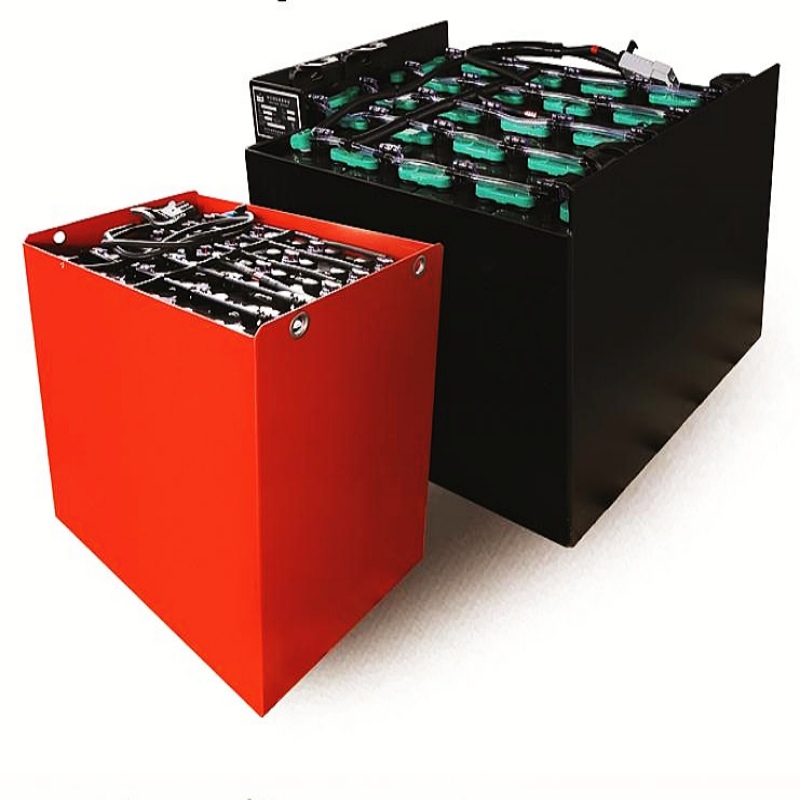How to maintain and use lead-acid batteries?
Jul 26, 2016Basic Concepts
Battery capacity AH of electric forklift: the capacity of the battery is 48V 20AH as an example, it means that it can be discharged for 1 hour with the voltage and current of 48V 20A. If it is discharged with 48V 10A, it can be amplified for 2 hours
Continued mileage: 48V20Ah lead acid battery forklift is discharged with 10A current, to the end voltage of 42V, 2 hours (preferably not to 42V, it will damage the battery, which will be discussed later), the load is 70 kg, the theoretical flat road is 25 kilometers at a constant speed, and the continuation mileage is 50 kilometer
Battery life: According to the standard, in theory, each discharge to 70%, there are 350-500 discharge cycles. Under normal circumstances, the battery life is 2-5 years (3 years of correct maintenance is no problem)

Common battery failures
1. The battery loses water: the battery will release hydrogen and oxygen during the electrochemical action, which will be released from the safety valve. Water is composed of hydrogen and oxygen, losing hydrogen and oxygen, etc. loses water. The loss of water also brings serious vulcanization, and the battery capacity decreases, which in turn leads to
Cause thermal runaway and positive plate deformation, battery shape expansion, completely scrapped. Generally, the battery should be refilled after 12 months of use. It is manifested in: 1. The battery is hot. 2. The red light of the charger will not change to the green light.
2. Battery vulcanization: A layer of large particles and white hard crystals is formed on the surface of the negative plate inside the battery. After charging, it still cannot be peeled off and cannot be converted into lead sulfate as an active substance, which is called irreversible sulfation phenomenon, referred to as "vulcanization".
Causes of vulcanization:
1. The battery is undercharged for a long time or not charged in time after discharge.
2. Long-term overdischarge or small current deep discharge.
3. Because the battery loses water or the electrolyte concentration is too high, the composition is not pure.
4. The external temperature changes rapidly. The performance is: the battery is full as soon as it is charged, and it runs out of power after running.
3. Softening of the positive plate of the battery: the battery electrolyte appears red or black, or even black and muddy. It is inevitable that the active material on the positive plate of the battery will soften and fall off, which is related to the number of cycles and deep discharge. The positive plate is softened in advance
The reasons are:
1. High current discharge state. Often overloaded, starting uphill.
2. Deep discharge. It is often discharged to the extreme point of the battery, and the anti-boosting power is still in use.
3. High current charging. Often use a charger with a large output current to charge a small-capacity battery.
4. Battery thermal runaway: In the later stage of battery charging, the charger does not turn on the green light, and at the same time, the battery is seriously heated, and the temperature reaches above 80 degrees Celsius. The precipitation pressure is too high, which will cause the battery case to heat and deform until it is scrapped.
reason:
1. The battery loses water.
2. The battery is vulcanized, and the internal resistance increases.
3. The battery cell is backward.
4. The charging voltage is too high. The charging voltage of some inferior chargers is higher than the specified value, resulting in an increase in the gas evolution of the battery and thermal runaway of the battery.
5. Battery short circuit: the positive and negative plates of the battery are in direct contact, or are overlapped by other conductive substances, which is called a short circuit of the plates.
reason:
1). The electrolyte is not pure, or the supplementary solution contains impurities.
2). The reason of battery grid alloy material. The performance is as follows: After the battery is fully charged, the battery cannot be stored for a period of time.
6. Open battery: Open battery is a rare battery failure mode. The main manifestation is that the battery cannot be charged, and the indicator light of the charger turns green when it is charged, but there is no current output when it is discharged.
7. Battery leakage: battery leakage is often caused by external reasons such as collision and exposure. If the battery leakage is found, the casing should be repaired immediately, and the condition of the electrolyte should be checked at the same time, and the electrolyte should be replenished in time.